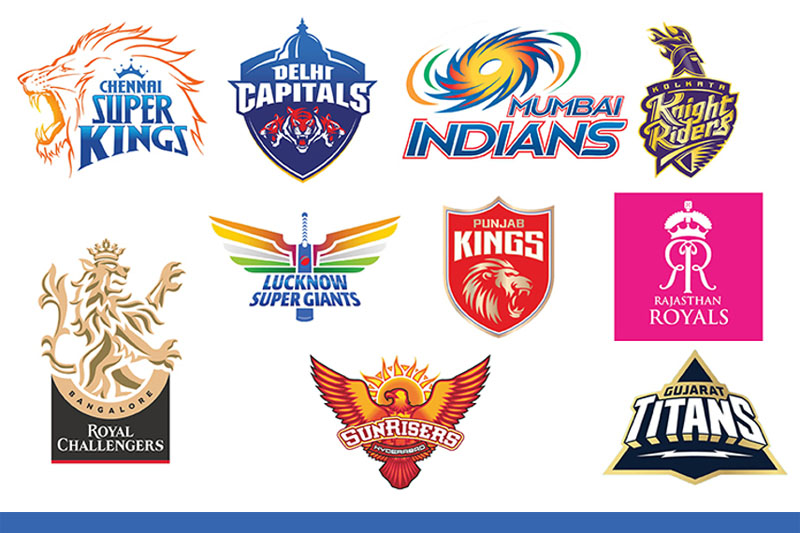Cricket in India is not just a sport; it’s an emotion. And when you mix that passion with business, you get the Indian Premier League (IPL)—a cricketing spectacle that has transformed into a multi-billion-dollar empire. But have you ever wondered how the IPL makes money? Let’s break it down, not like a boring business report, but as a fascinating story of cricket, commerce, and crazy profits.
1. The Franchise Model – Owning a Piece of the IPL Pie
Think of the IPL as a blockbuster movie, where the teams are like production houses. But instead of Bollywood actors, they have cricketers as superstars. When the BCCI (Board of Control for Cricket in India) launched the IPL in 2008, it sold team franchises to some of the biggest names in business and entertainment.
- Reliance owns Mumbai Indians
- Shah Rukh Khan co-owns Kolkata Knight Riders
- CSK is backed by India Cements
These teams were auctioned for hundreds of crores, and today, their valuations have skyrocketed. But here’s the catch—teams don’t just make money from cricket; they rake in cash from sponsorships, merchandise, ticket sales, and revenue-sharing deals.

2. Media Rights – The Real Money Machine
Now, let’s talk about the BIGGEST cash cow—broadcasting rights. Every time you watch an IPL match on TV or your phone, you’re adding to its massive revenue. Media giants fight tooth and nail for IPL rights because they know people will watch it, no matter what.
- The 2023-2027 IPL media rights were sold for a jaw-dropping ₹48,390 crore (~$6.2 billion).
- Star Sports grabbed TV rights, while Viacom18 bagged digital streaming rights.
- The cost per IPL match is higher than even the English Premier League (EPL) and the NBA!
And how do these broadcasters make their money back? Advertising! Brands are willing to spend crores just to get a few seconds of airtime during matches. Ever noticed how Dream11, Swiggy, and Cred ads keep popping up every over? That’s IPL’s media money magic.
3. Sponsorship Deals – Where Brands Fight for Visibility
You know you’ve made it big when companies are fighting to put their logos on your jersey. IPL has multiple sponsorship categories, and they bring in insane revenue.
- Title Sponsor: Tata paid ₹670 crore (2022-2023) just to have their name before “IPL.”
- Official Partners: Dream11, Paytm, Cred, and others pay multi-crore deals to be part of the IPL bandwagon.
- Team Sponsors: Every team has a list of brands plastered on their jerseys, bats, and even helmets.
And let’s not forget those weird yet catchy ads (remember Cred’s Rahul Dravid “Indiranagar Ka Gunda” campaign?). That’s IPL-level marketing!

4. Ticket Sales & Stadium Revenue – The Fan Experience
No matter how big streaming gets, there’s nothing like watching an IPL match live in a stadium. The energy, the chants, and the nail-biting moments—it’s an experience in itself.
- Ticket prices range from ₹500 to ₹50,000, depending on the match and seating.
- VIP hospitality boxes, food & beverages, and in-stadium ads generate extra revenue.
- A share of this revenue goes to teams and the BCCI.
And with IPL shifting to multiple cities, every franchise gets its chance to make money from home-ground fans.
5. Merchandising & Licensing – Selling the IPL Fever
IPL is not just a cricket league; it’s a brand. Fans love to sport their favorite team’s jerseys, caps, and accessories. From online sales to exclusive in-store collections, IPL merchandise is a booming business.
- Teams tie up with brands like Nike, Adidas, and Puma for official merchandise.
- Jerseys, bats, wristbands, and even mobile covers sell like hotcakes.
- E-commerce platforms push IPL merch during the season, and sales skyrocket.
The best part? Even non-cricket fans wear IPL jerseys just for the coolness factor!

6. Player Auctions – Where Stars Are Bought Like Stocks
Ever seen an IPL auction? It’s like watching a high-stakes poker game where team owners bid crazy amounts for top cricketers.
- Sam Curran (₹18.5 Cr to Punjab Kings, 2023) – Most expensive IPL player ever!
- Young Indian players like Rinku Singh & Tilak Varma get life-changing deals.
- Every team has a salary cap, but they strategically buy players to create a winning squad.
It’s not just about talent; it’s about star power, branding, and performance.
7. Fantasy Leagues & Digital Revenue – The Online Boom
IPL has brilliantly integrated with the digital revolution. Platforms like Dream11, My11Circle, and MPL let fans participate in fantasy cricket leagues, making IPL more interactive than ever.
- Dream11 became IPL’s official partner by paying ₹222 crore per year.
- Social media promotions, NFTs, and Web3 partnerships are growing revenue streams.
- Teams monetize YouTube and Instagram with exclusive content.
With IPL expanding into digital streaming, online engagement, and interactive experiences, expect more revenue innovation in the future!
8. Prize Money & Revenue Sharing – Everyone Gets a Piece
IPL is not just about making money—it also rewards teams and players.
- Winning team gets prize money (₹20 crore for the champion).
- Players get performance-based incentives.
- Franchises get a share of overall IPL earnings to ensure financial stability.
The best part? Even the last-placed team walks away with crores!
Final Verdict: IPL = The Ultimate Money-Making Machine
The IPL business model is the perfect mix of sports, entertainment, and insane profits. With multiple revenue streams—media rights, sponsorships, ticket sales, merchandise, and digital innovations—it continues to break records year after year.
Why is IPL so successful?
✔ Unmatched marketing & fan engagement
✔ Billion-dollar sponsorship & broadcasting deals
✔ Franchise-based model ensuring steady profits
✔ Integration with digital platforms & fantasy leagues
The IPL is not just a cricket tournament; it’s a business phenomenon that will only grow bigger in the coming years. So, whether you’re a die-hard fan or a business geek, one thing is clear—IPL is here to stay, and it’s going to keep making history (and billions) every season!
Disclaimer
The information in this article is for general informational purposes only. While we strive for accuracy, financial figures, valuations, and sponsorship details may change over time. Readers are encouraged to verify details from official IPL sources, franchise reports, and financial statements. The views expressed are those of the author and do not necessarily reflect the official stance of The Business Nexus.





